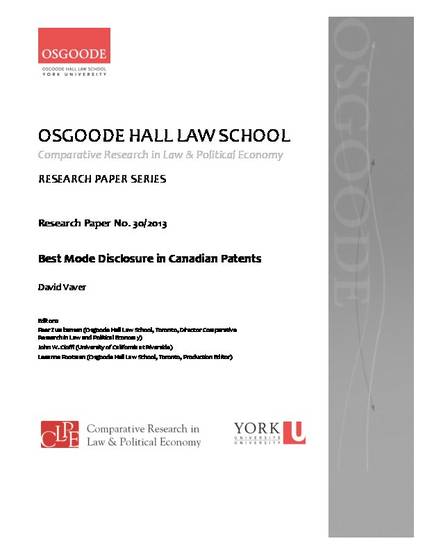
- best mode requirement,
- patent act,
- patent law
A recent decision of the Federal Court of Canada, endorsed by the Federal Court of Appeal, holds that the duty under the Patent Act to provide in the patent specification the best mode of working the invention applies only to machines and no other class of invention. This paper reviews the history of the best mode requirement, from its origin in the wording of 18th century British patent grants and its migration into late 18th U.S. and early 19th century Canadian legislation, until the present time. It is clear that Canadian law from the beginning has always required an invention’s best mode to be disclosed as a consequence of the statutory duty to correctly and fully describe the operation and use of every invention. The later express inclusion of a best mode duty for machines does not impliedly exclude the same duty for all inventions. Contrary case law is therefore wrong and should be overruled.
Available at: http://works.bepress.com/david_vaver/26/
